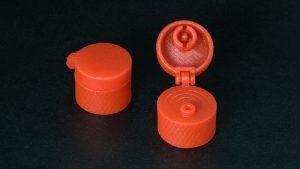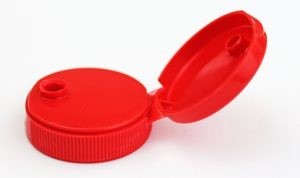


Live hinges are a type of hinge that is made from the format of the main material (they are usually polypropylene plastic). They are a thin piece of plastic that acts as a link between two larger plastic parts.
Plastic parts are obviously larger.
And the “bridge” hinges are constantly made of a piece of plastic.
Because it is so thin and usually made of flexible polypropylene, the live hinge can also rotate about an axis of 180 degrees or more – potentially for millions of rounds without breaking.
Unlike most hinges, which consist of several parts assembled in a traditional mechanism, living hinges are not a separate entity.
They can be described as a targeted fault line at a predetermined point in the material that is designed not to deteriorate after repeated bending. The bottle cap on the tomato sauce bottle is perhaps the most famous example of a hinge.

Live hinges must be designed, prototyped and then manufactured.
The design is done using computer-aided design (CAD) software such as Solidworks
While sampling is done by one of two main methods:
CNC machining (a subtraction process) or injection molding.
It is important to note that not just anyone can CNC machine a prototype hinge.
In fact, as far as we know, Creative Mechanisms is the only store that has this unique feature.
3D printing (production of additives) is the third way to prototype living hinges but currently has quality limitations that are not inherent in CNC and injection molding (more on this below).
Mass production is done exclusively using injection molds.
The first step in the production of live hinges is computer-aided design (CAD).
The main design considerations include the operation of the hinge, the size of the hinge, and the desired range of motion.
See the following section for examples of different live hinge designs.
Straight hinges are the simplest type of live hinge.
They can be long, short, continuous or divided along the hinge line. Here are some examples:
Short continuous continuous hinge: The hinge also includes two plastic “stops” that stop the rotation at 180 degrees.
This is also called a triple hinge because three unique plastic pieces on a similar axis act as a living hinge.
Butterfly hinges are a type of classic hinges that go back to the 17th century cabinets.
A butterfly hinge is used when you are looking for a “double stable” door operation.
Because it is stable, the door wants to stick open or closed and not stay in between.
The strings on the side of the impeller hinge are stretched and act like a spring that pulls the lid open or closed.
They can also become a living hinge and their main purpose is to allow a certain range of motion while allowing others
They do not know, they do.

This unique design is a dual-purpose hinge designed to prevent children from opening the container or door.
A live hinge is designed in the mechanism, but other features of the lid make it resistant to the child.
This is simply using multiple hinges in one place (whether two, three or even more).
The hinge below was previously shown as a straight hinge (due to the plastic part in the middle of the hinge), but it is also a triple hinge.
As you can see, three unique living plastic hinges work together.
In general, the best way to produce a new product with a live hinge is to design the mechanism, the CNC machine is a prototype of the final production material (polypropylene), and
Then, after finalizing the design, to create injection molding tools to produce polypropylene volume using injection molding.
By far the best way to produce a prototype product is with live hinges.
If you are in the field of CNC trying to prove the concept or up to 10 prototypes, CNC is probably the best way.
Many people believe that a live hinge can not be CNC, but they are wrong.
Everyone says just forget… “They can not machine polypropylene.
But it turns out that they are all wrong.
It can be done.
They can clean polypropylene with great detail, they can perform a sudden snap, and they can also machine the hinge prototype, which was previously impossible, up to 0.005 inches.
The results are amazing.
Not only can it be done, but it is by far the cheapest and highest quality way to produce a prototype model for a new living hinge design.
Read more about the CNC prototype production process for live hinges here.
To confirm the design and prototyping, using a CNC machine to cut the live hinge prototype is the best choice.
This is because you do not need to bother and cost to design the template. Making hinges with molds can be a difficult process and you make money
You will invest more to do that.
Injection mold is the cheapest way to produce live hinged parts in high volume.
If you already have a final design and have produced a prototype that you are satisfied with the final production material (polypropylene), then you are ready to check the injection mold.
To sell specimens that require several hundred prototypes, using an injection mold is likely to be a better option, not only because of the fast rotation but also because the finish is better than the CNC cutting prototype. Sales are very important.
It is desirable that the prototype be as close as possible to the final product.
In general, the production of tools for mold molding is very expensive.
Working with an experienced design team that can convert part designs into molds in CAD, it can produce the desired parts without injection mold defects. For example, choosing the location of the gate or the number of gates is a very delicate process. .
Some trial and error work for most people, but for experienced designers, factors such as the design of the prototype itself or the location of the hinge will be considered.
There are two common problems when choosing the location of a gate or gates.
The first is that the gate is close to the hinge, squeezing the plastic from there to the rest of the mold creates a great hinge but causes it to sink because the hinge is too small to ensure proper plastic distribution.
However, selecting two gates, with the plastic in the middle of the hinge movement, reduces the chance of drowning, but may cause the hinge to malfunction and crack.
3D printing hinges are created using a plastic drop in the vertical direction.
Some plastics available for 3D printing can replicate the quality of polypropylene, but none of them are currently working well.
Live 3D printing hinges are fragile and will break if bent frequently.
Ordinary hinges made of polypropylene can bend millions of times without significant wear and tear.
Ordinary hinges made of polypropylene can bend millions of times without significant wear and tear.
Another weak option for prototype live hinges is to create a rubber mold and then cast a low-strength urethane model.
The problem, similar to prototype hinges with 3D printing, is that you end up bending the hinge several times and it breaks.
This product simply does not resist ordinary wear and tear.
The last thing you want to do is prove your point and break it.
This is a very weak prototyping method compared to CNC.
Everything you need to know about live hinges.
Screws:
You can make a living hinge mechanism from a thin piece of polypropylene plastic sheet and then screw it in place between two parts of a hinge (base and cap).
Strip:
Believe it or not, many people who do not know the process of making CNC hinge prototypes end up succeeding in 3D printing and / or casting the prototype in urethane with a reduced diameter to disappoint the broken prototype.
The backward option is usually a bar.
This is simply unnecessary because CNC is a professional and cost-effective way to produce prototypes.
Materials needed to produce live hinges:
Live hinges are made almost exclusively of polypropylene plastic.
Polypropylene is a very flexible and soft material with a relatively low melting point.
These factors cause most people to not be able to machine the material properly.
Does the gums.
Does not clean.
The CNC starts to melt from the heat.
Normally it should be flattened so that everything is close to the final level.
Everyone says just forget… they can not machine polypropylene.
But it turns out that they are all wrong.
It can be done.
And we can do it.
Everything you need to know about live hinges.
Like polyethylene, they can replace polypropylene as a living hinge.
Stratasys also promotes hinge prototype capability using 3D printing materials such as “Rigur” or “Nylon 12”.
The positive side of 3D printing is that it can be done quickly and cheaply.
The disadvantage of 3D printing in our experience is that prototypes made of 3D printing materials break down much faster than a traditional polypropylene hinge. The problem with 3D printing of a hinged prototype is that a better prototype can be made. Made from a solid block of polypropylene with the same small cost and fast uniformity over time using the same material (polypropylene). )
From which a production hinge is made.
Accordingly, it acts like a live injection hinge (meaning it bends millions of times without significant wear and tear).
3D printing depends exclusively on shops that do not know how to CNC make a hinge.
If you are making a product that should be made of non-polypropylene plastics (eg acrylic, polycarbonate or steel), it is probably best to use a traditional hinge with several moving parts.
Consumer products are really a common place to see live hinges.
Common examples include plastic bottles used to store food products such as ketchup or health products such as shampoos and body washes.
1.Stuffed bottle cap:
Tomato sauce bottle caps are an example of live hinges that you use almost every week.
The two images shown below are a classic example of a living butterfly hinge.
2. Personal hygiene bottle caps:
Body wash, shampoo and personal care products are often packaged with live hinge caps. Everything you need to know about live hinges. Artan Petro’s website andInstagram .
Production of General purpose polystyrene with different grades

info@artanpetro.com
Qom Shokouhieh Industrial Town, end of the second phase, Babaei Square, Babaei St., Alam al-Huda St. 1, No. 1331
+982533346396![]()
+982533346473![]()